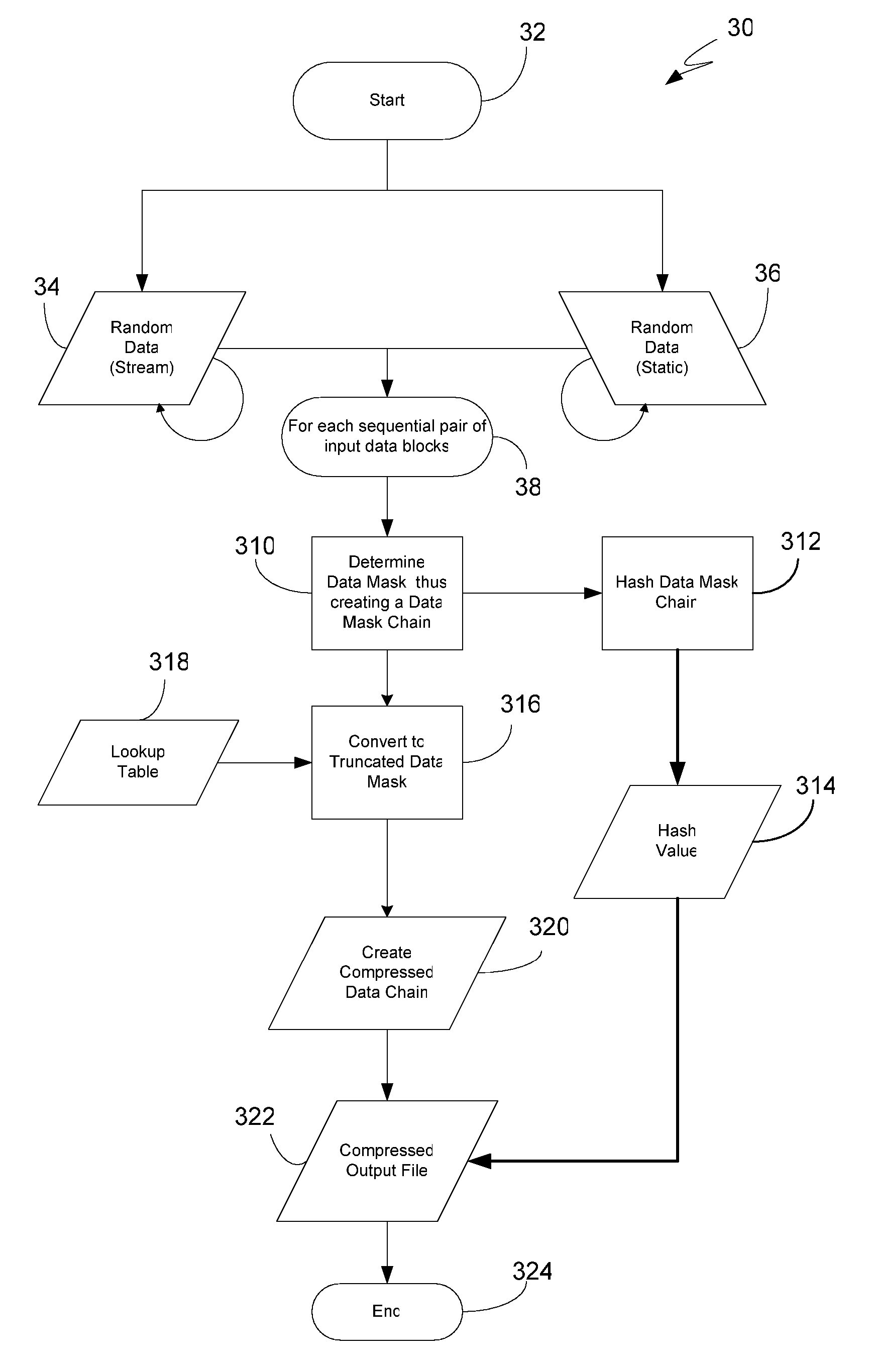Methods, systems and computer-readable media for compressing data
a data compression and computer-readable media technology, applied in the direction of code conversion, electrical equipment, etc., can solve the problems of inherently more difficult compression of random or encrypted data, exceedingly difficult design of compression and decompression algorithms that will excel in most situations, and randomized digital data of this nature cannot be typically compressed by normal compression algorithms
- Summary
- Abstract
- Description
- Claims
- Application Information
AI Technical Summary
Benefits of technology
Problems solved by technology
Method used
Image
Examples
Embodiment Construction
[0029] An approach is described for the compression of input data, and particularly one which is suited for providing a lossless method for compressing random input data. Both a compression algorithm is described, as well as a decompression algorithm for restoring the original uncompressed data. The decompression algorithm allows for its parameters to be adjusted to suit one's needs as they relate, for example, to the ratio of compression as a function of the decompression speed. For purposes of the description, random input data is that which is characterized by a plurality of bits having few, if any, detectable patterns or redundancies. Such data at times may be referred to herein as random digitized data. Typically, such random digitized data is that which has been previously compressed or encrypted so that it does not exhibit the patterns and redundancies typically found in non-random data. The ordinarily skilled artisan should appreciate, though, that while the embodiments are ...
PUM
 Login to View More
Login to View More Abstract
Description
Claims
Application Information
 Login to View More
Login to View More - R&D
- Intellectual Property
- Life Sciences
- Materials
- Tech Scout
- Unparalleled Data Quality
- Higher Quality Content
- 60% Fewer Hallucinations
Browse by: Latest US Patents, China's latest patents, Technical Efficacy Thesaurus, Application Domain, Technology Topic, Popular Technical Reports.
© 2025 PatSnap. All rights reserved.Legal|Privacy policy|Modern Slavery Act Transparency Statement|Sitemap|About US| Contact US: help@patsnap.com



